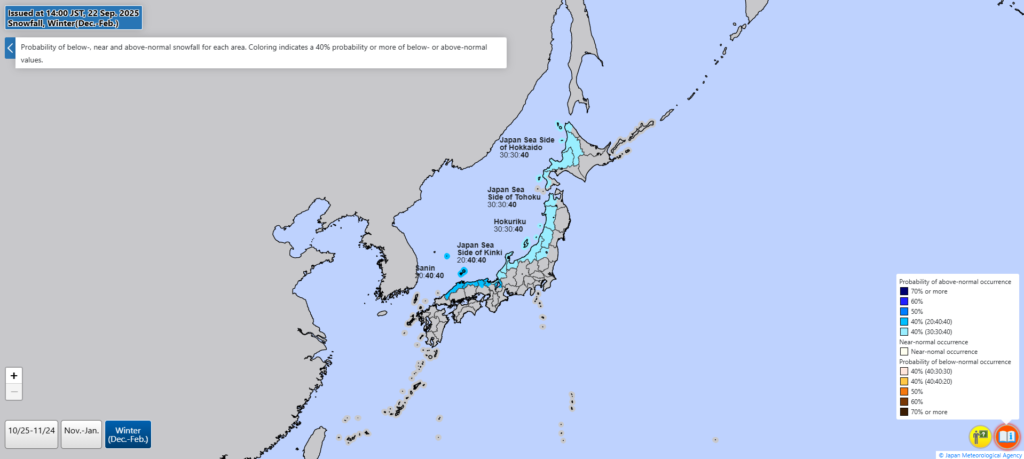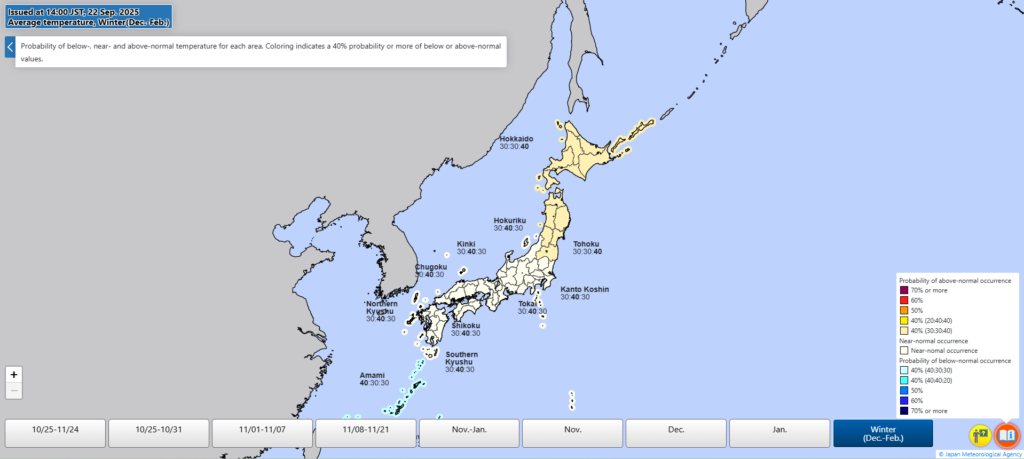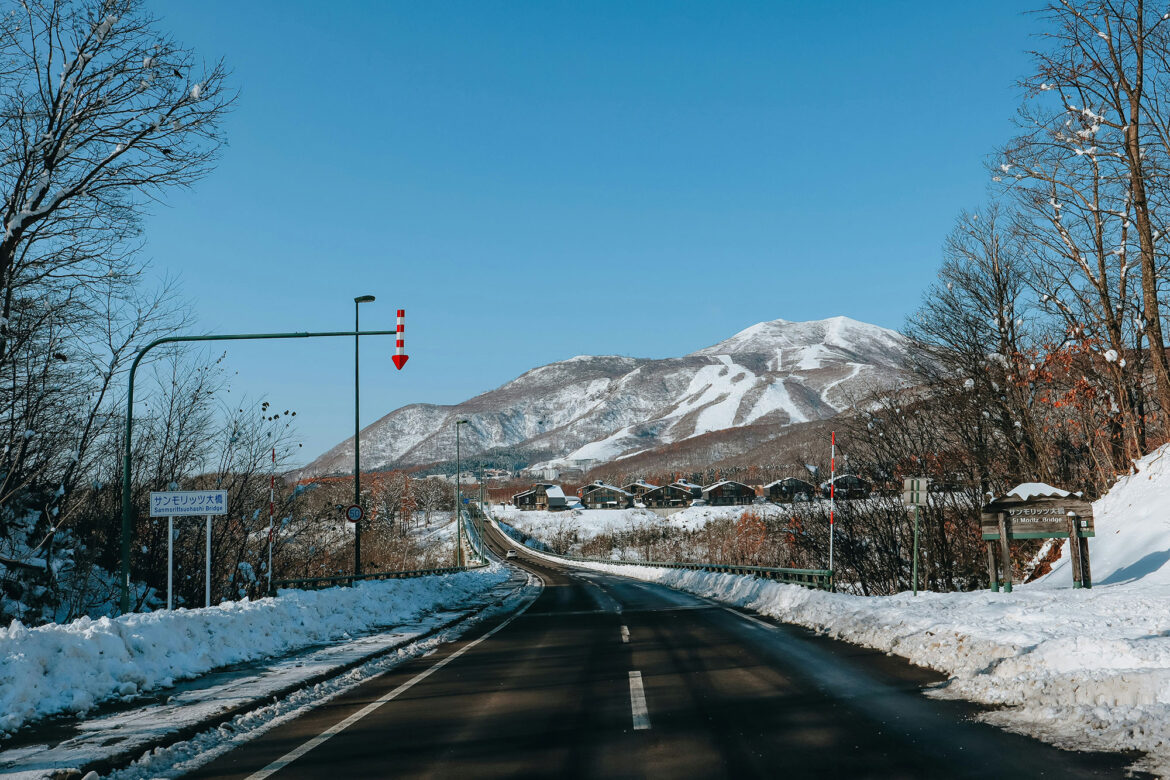The Japan Meteorological Agency (JMA) has released its long-range outlook for the 2025–26 winter (December–February), giving snow-watchers their first official glimpse of what’s ahead. And while there are early signs of another strong season – helped by a developing La Niña – history tells us it’s best not to plan your powder pilgrimage around a seasonal forecast.
A closer look at the JMA forecast
According to the JMA’s seasonal snowfall outlook, many of Japan’s snow-heavy regions – those located in the regions of Hokkaido, Tohoku, Hokuriku, and Kinki – are shaded in light blue, indicating a 40% probability of above-normal snowfall. Each area is labelled with a three-number probability breakdown (for example, “30:30:40”), which represents the likelihood of below-normal : near-normal : above-normal conditions.

Many of Japan’s snow-heavy regions – those located in the regions of Hokkaido, Tohoku, Hokuriku, and Kinki – are shaded in light blue, indicating a 40% probability of above-normal snowfall
So, a “30:30:40” forecast means there’s a 40% chance of an above-average winter, not that snowfall will be 40% higher. It’s a subtle but important distinction – one that helps set expectations for what is, ultimately, a probabilistic outlook rather than a prediction.
As for temperatures, the JMA expects mostly near-normal readings across the country, with slightly warmer conditions possible in northern Honshu and Hokkaido. That may sound concerning to snow lovers, but remember that La Niña winters often strengthen the East Asian Winter Monsoon, which drives cold Siberian air over the Sea of Japan – the key ingredient in Japan’s famous powder recipe.

JMA average temperature
What Mountainwatch’s Grasshopper says
In his October outlook on Mountainwatch, forecaster The Grasshopper is cautiously optimistic. It notes that “the likely development of a ‘Double Dip’ La Niña through the end of this year promotes a snowier-than-average season through a strengthened East Asian Winter Monsoon.”
It points out that global ocean temperature patterns – cooler waters in the central Pacific and warmer seas surrounding Japan – are “consistent with La Niña fingerprints”, suggesting favourable conditions for early and frequent snowfalls, particularly on Honshu’s west coast and in Hokkaido.
Don’t book your ski trip on the forecast alone
Encouraging? Definitely. A guarantee? Not even close.
A 40% probability of an above-normal season still means there’s a 60% chance conditions will be average or below, and Japan’s mountainous microclimates can produce wildly different outcomes between resorts – even within the same valley.
So while both the JMA and Mountainwatch hint at a potentially strong winter, the best approach remains tried and true: book your Japan ski trip for the experience, not the numbers. Once the first flakes start flying, keep an eye on the short-term models – and trust that somewhere in Japan, it’ll be dumping. It always does…
ENQUIRE NOW
 Organise your guided backcountry skiing tour in Japan
Organise your guided backcountry skiing tour in Japan
There are lots of options in Hokkaido and Honshu that can be tailored to the kind of skiing you like and when you plan to come. Answer a few questions and we’ll get back to you with some recommendations.
Enquire Now


AloJapan.com